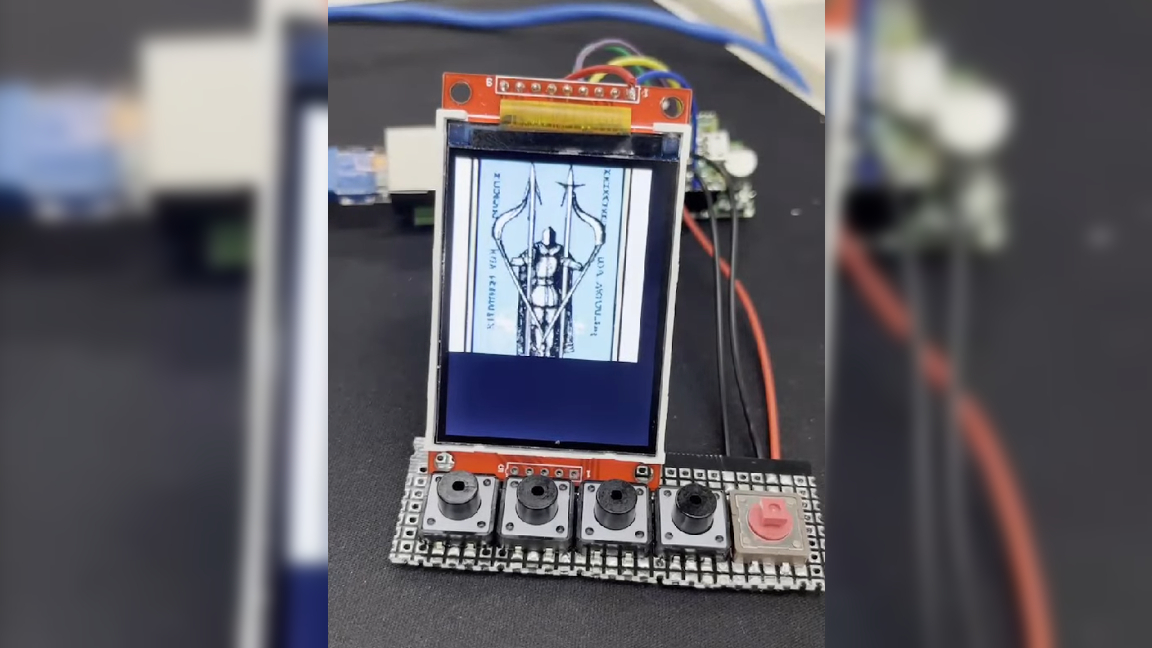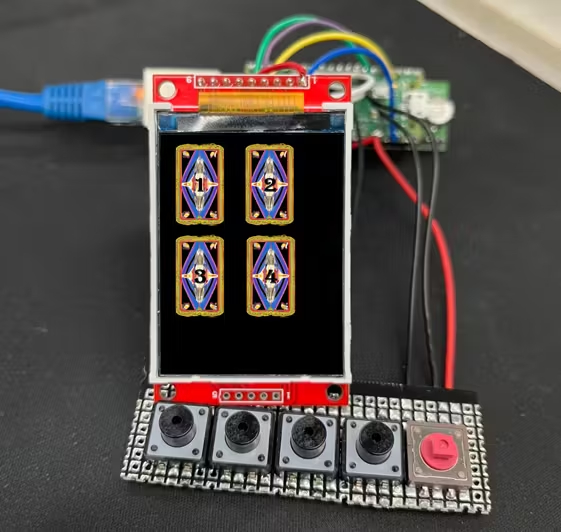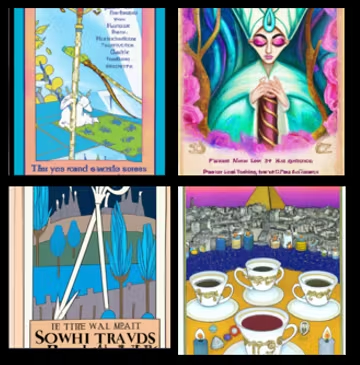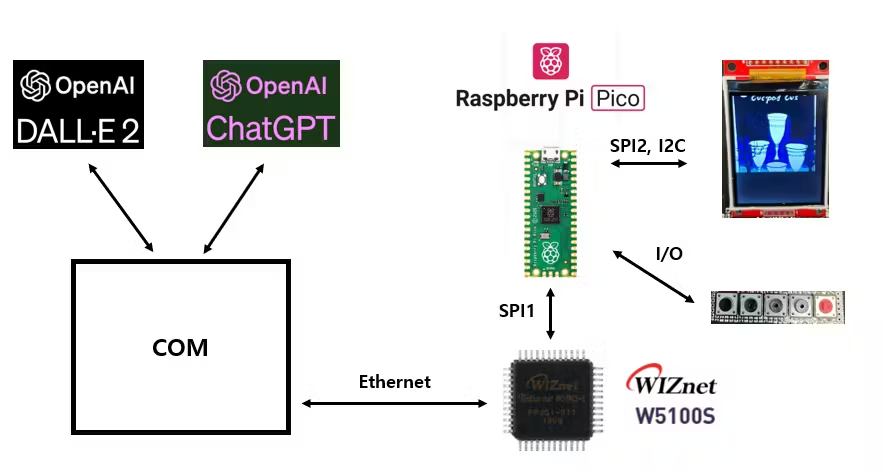
This isn’t the first time we’ve seen the Raspberry Pi crossed with the world of Tarot. We previously covered a project in which a Pi generated Tarot cards based on EM noise. But today, we’re sharing one that generates cards and artwork with a little help from artificial intelligence. Maker and developer Alan used both Chat GPT and Dall-E-2 to create custom artwork for Tarot cards on demand.
The project is based around a Raspberry Pi Pico. It’s connected to a screen that shows four possible Tarot cards. Four buttons can be used to select a given card. The Pico accepts this input and processes it to choose a random Tarot card for the user; at this point, Chat GPT and Dall-E-2 come into play.



These AI systems are responsible for parsing a description of the card to Dall-E-2, which generates a unique image for the card based on the description. The image is then returned to the Pico, which displays it on the LCD screen. After the custom image is displayed, a brief description of the card appears.
To recreate this project, you’ll need a few specific components. In this case, Alan uses a Raspberry Pi Pico with a W5100S module that features Ethernet support. However, you could easily use a Pico W in its place. It uses five buttons total and connects to an SPI-based LCD screen.
Alan was kind enough to share the juicy details about this project and how the code works. You can find a full breakdown of the Pico Tarot system and how to set it up on the official Hackster page for the project. You will need access to the Chat GPT and Dall-E-2 APIs to bring everything together.
To get a closer look at this Raspberry Pi project in action, check out the video shared by Alan on YouTube and delve into the details over at Hackster. Be sure to follow Alan for more projects and any future updates to this one.







